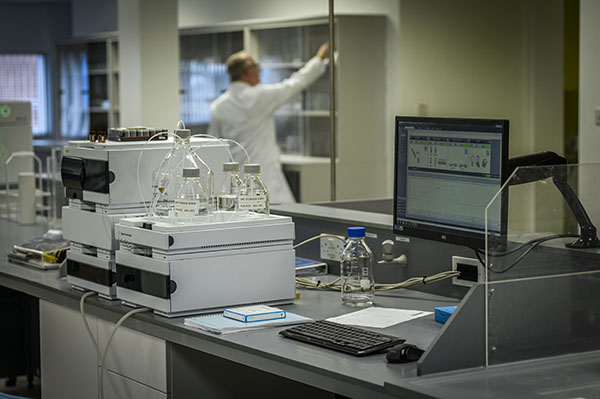
Authorities should create independent bodies to evaluate the science behind vapor—and base their policies upon the most credible evidence.
By George Gay
June 19, the Australian federal government announced a ban, from July 1, on the import of nicotine for vaping. The ban reportedly amounted to a de facto prohibition on vaping with nicotine because, while it provided for an exemption for imports made on the basis of a doctor’s prescription, the Australian Tobacco Harm Reduction Association (ATHRA) said that using such an exemption would have been complex, time-consuming and ultimately unworkable.
But temporary relief was granted when, on June 26, the government announced that it was suspending the implemen-tation of the ban while it conducted a review and consultation around the classification of nicotine. At the same time, how-ever, it said that a new version of the ban with a “streamlined” [but at the time unspecified] method for people to obtain prescriptions would be brought in from the start of next year.
There might be a good reason why the government is going to conduct this review when it has already decided to reintroduce a modified ban within six months, but it wasn’t immediately obvious to me what that reason might be. Having said that, perhaps there is no good reason. The government seems to have form in putting the cart before the horse.
According to ATHRA, the June 19 announcement of a ban was made before the publication of a report that was based on a scientific inquiry into vaping commissioned, at a cost of aud750,000 ($529,403), by the health minister last year.
I was reminded by all this of the nonsense song: “You put your left arm in / You take your left arm out / You do the hokey cokey / And you shake it all about.” I mean, even if you assume that vaping policy decisions in Australia are made on the basis of “two-up” and therefore might not always make a whole load of sense, that doesn’t explain the change that took place. Unless, that is, Australia is only partway through a best-of-three-throws series. In which case, before I get to the end of this piece, the policy might have changed again.
Despite, like the rest of us, being fully paid-up members of the club of sentient animals, Australian smokers and vapers may be allowed to import nicotine for vaping only if they have a prescription from their doctors, a certificate from their spiritual advisers and a letter signed by their mums. For goodness’ sake, these are adults who are allowed to buy and consume any amounts of cigarettes and alcohol, which are surely the two most toxic consumer products on the market.
I don’t want to trivialize what is a deathly important debate on vaping, but I find it difficult to take seriously such a rapid change of direction, even given that a week is a long time in politics. Of course, an argument can be made that the government acted responsibly in reacting to the opposition that quickly arose in respect of its June 19 nicotine ban—that it listened; that it had an open mind.
But it must be of concern that the government apparently didn’t listen before it made its announcement. And there has to be concern that the government might have suffered the same fate as many of those who attempt to maintain a completely open mind—that is, its brain fell out.
In fairness to the government, however, you have to say that the mess it got itself into was simply built on some fairly strong foundations already established by federal and state governments. For instance, as I understand things, even before the new ban was announced, nicotine for vaping was classified in Australia as a poison, and its import was illegal unless approved by the Therapeutic Goods Administration. Though, depending on the laws of individual states, nicotine could be bought over the internet provided it was for personal use. “You put your right arm in,” etc., etc .…
There are many arguments to be made against a ban on the import of nicotine for vaping, most of which will be familiar to the people who read this magazine, and those arguments are being well made in Australia by individuals, organizations such as ATHRA and politicians, even some within the ranks of the ruling coalition.
But one of the major problems for those opposing the ban is that it is irrational and, as has often been stated in the past, it is pretty well impossible to reason somebody out of a position that they didn’t reason themselves into.
And there could be significant negative consequences if the government persists with its policy of banning nicotine for vaping. Despite the best efforts of the World Health Organization (WHO) to ensure that smokers continue to smoke rather than switch to vaping, the smokers of Australia, who, unlike the WHO, don’t exist in a bubble that protects them from unauthorized ideas, know that vaping might be their best route to harm reduction. And some of them will continue, despite the ban, to try to remain on that harm reduction route by obtaining nicotine through whatever means possible.
This will inevitably create risks because some of that nico-tine will no doubt be produced in unlicensed premises and all of it will be mixed with other e-liquid ingredients by users with no training in such enterprises. Goodness me, to take another example, surely no government would encourage its untrained citizens to start producing their own alcohol?
And it seems obvious that the Australian government recognizes the risk of homebrewing e-liquids because, as part of its original ban, it set the penalty for infringements at aud220,000. The severity of the penalties set for laws reflect a number of things and, it seems to me, in some cases, one of those is the likelihood that people will break the law because it is unreasonable. And nothing could be more unreasonable than introducing a law that makes it more difficult for an individual to try to improve his or her own health.
URGENCY TO ACT
But there are many people better qualified than I am to make the case against the ban and who will be using the time to the end of this year to do so. I am interested in a more general question that arises out of the shambles that was the ban and its suspension—a question that pops up in other countries, that has global repercussions but that is less often addressed.
Why haven’t countries around the world and even the inter-national community arrived at a working consensus on vaping that leads us down a rational, clearly defined pathway with direction that can be adjusted as new information is received about the best way ahead?
Why do we persist with performing the vaping “Hokey Cokey”? After all, you would imagine, I think, that this issue would be viewed by authorities around the world as a matter of the greatest urgency.
We are told by the WHO that tobacco consumption, largely in the form of cigarette smoking, comprises one of the biggest public health threats the world has ever faced, killing more than 8 million people a year worldwide. At the same time, it is indisputable that some cigarette smokers have used vaping to purge themselves of their tobacco smoking habit.
And, according to a timeline published by the Consumer Advocates for Smoke-Free Alternatives Association (CASAA), the idea of electronic cigarettes has been around for about 90 years, and the first commercial unit was pro-duced 17 years ago.
In other words, there is clearly a need for urgency here, and there has been time to act. But as can be seen from the Australian experience—and Australia is by no means alone in this—17 years on, many countries are still at the most basic of consultation stages; or, to put it in the Australian vernacular, we’re still running around like headless chooks when it comes to vaping.
FEAR OF THE NEW
Why is this the case? I don’t know the answer to that question, but there are a number of possibilities that occur, some, unfortunately, that tend toward the sorts of conspiracy theories that tell you Covid-19 is spread by 5G and that you would be better off forswearing a Covid-19 vaccine, should one be developed, and protecting yourself instead by sitting in a darkened room with a mixture of cow dung and honey on your head while listening to recordings of the narwhal daring us to be free.

But much as I like a truly bonkers conspiracy theory, I think I need to keep this piece on a reasonably even keel and, the more I think about it, the more I tend to the view that the major problem the world has in embracing vaping is that it is different to what we are familiar with—good old smoking. In The Book of Nothing, John D. Burrow quotes Francis Cornford as saying, “Every public action, which is not customary, either is wrong or, if it is right, is a dangerous precedent. It follows that nothing should ever be done for the first time.”
Perhaps because it is not much into irony, the WHO seems to have taken seriously this reasoning in its approach to vaping. While acknowledging that much has been written about the potential of electronic cigarettes to help tobacco users quit, it says the evidence is inconclusive and goes on to advise against e-cigarette use.
OBJECTIVE EXAMINATION
Given the enormous differences between the constituents of tobacco smoke and those of e-cigarette vapor, and given the evidence that points to the ability of vaping to substitute for smoking for a significant number of smokers, the WHO’s position seems to take the precautionary principle to absurd heights. And one of the problems here is that the WHO exerts enormous influence over the health policies of many countries.
But there is no need for governments of the world to slavishly follow the WHO line. There is available to governments a huge amount of information on vaping from which they can make their own judgements and decisions. At the same time, however, there is a problem because while some of the information available is reasonable, some of it is questionable and some of it is unreasonable.
And since this information is being made available in a constant stream, there is probably little wonder that governments announce policies that within a week have to be suspended. To my way of thinking, what is needed, therefore, is for countries to establish taxpayer-funded bodies that are isolated from lobbyists and that are staffed with scientists who can examine objectively any scientific papers produced in respect of vaping and vapor devices.
Such bodies would examine all such papers and exclude any, no matter what side of the debate they supported, that did not meet the required standards of methodologies and results interpretation.
These bodies could then make precis for politicians of the papers that were found to advance the vaping debate. In this way, governments would be able to make decisions on the basis of facts, they would not be continually pulled this way and that by the latest bungled interpreta-tions of the results of biased research, and they would have no excuse for inserting their own biases.
Of course, some would complain that this would be an expensive exercise, but given what we are told are the extremely negative health, economic and social con-sequences of the continuing smoking epidemic/pandemic, such expenditure would surely be repaid many times over.
Others might complain that the U.S., for instance, already has the Food and Drug Administration (FDA) to oversee research in this way, and there is some truth in this. But the FDA also makes and enforces regulations, it interacts with those carrying out research and its decisions are subject to court challenges.

The bodies I envisage would act sim-ply as filters that let through to regula-tory bodies only the research results that have passed close scientific scrutiny. They would perform peer reviews as part of a process that was properly funded and fit for purpose. They would not make policy recommendations and, importantly, their decisions would not be open to challenge, though the workings of these bodies would be subject to scrutiny by a suitable organization.
Surely it would be worthwhile putting in place such bodies so that, if vaping has the potential that many people believe it has to prevent a significant number of smoking-related deaths, that potential can be fully realized. And, of course, if it were found that that potential did not exist or could not be realized, it would allow us to move on. Such a process has got to be better than doing the “Hokey Cokey” on a loop. V

















